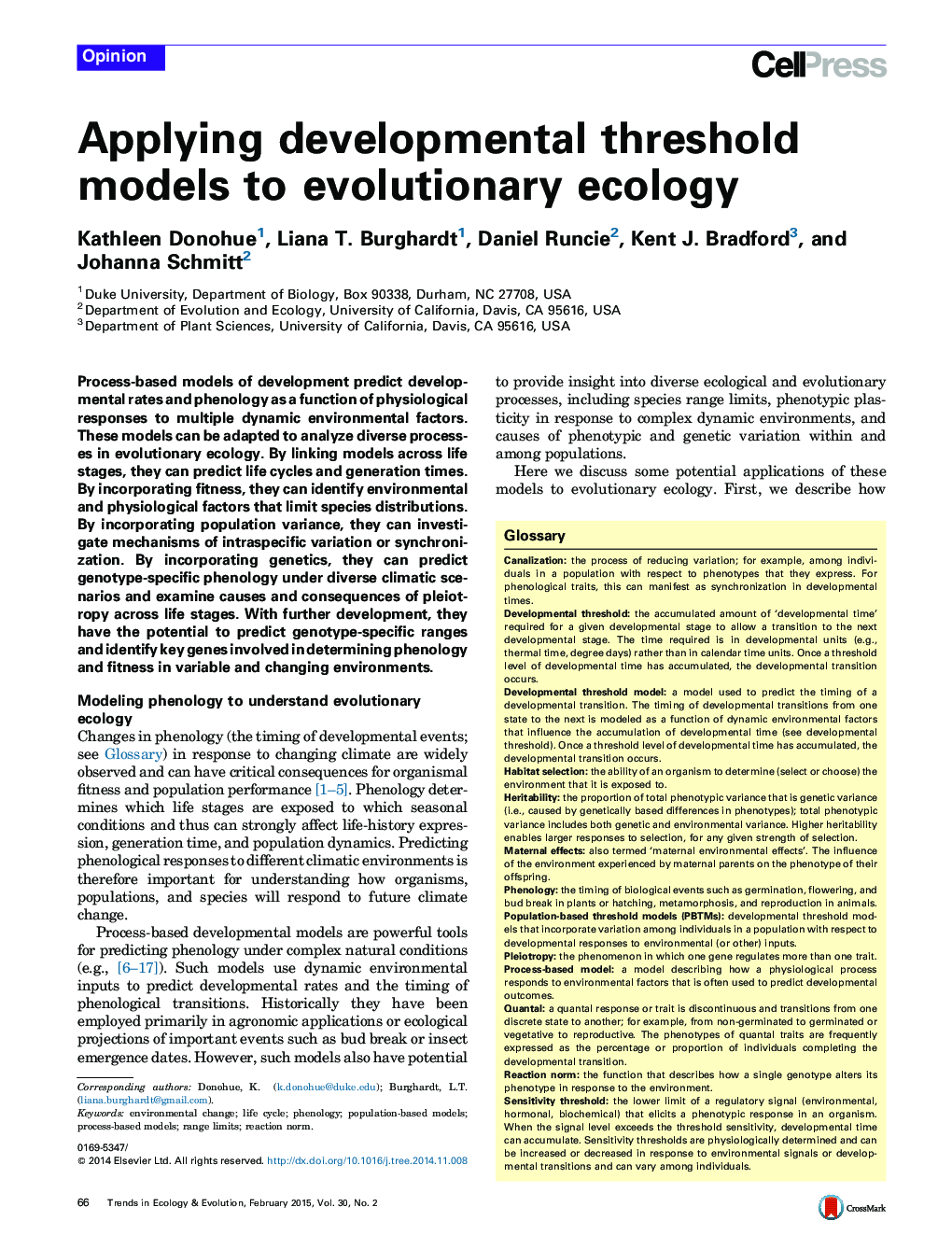| کد مقاله | کد نشریه | سال انتشار | مقاله انگلیسی | نسخه تمام متن |
|---|---|---|---|---|
| 142359 | 163107 | 2015 | 12 صفحه PDF | دانلود رایگان |
• Phenological models predict reaction norms in dynamic natural environments.
• Whole life cycles can be modeled by combining multiple phenological models.
• When combined with fitness, the models predict range limits of genotypes or species.
• Sources and mechanisms of variation among individuals can be tested with the models.
Process-based models of development predict developmental rates and phenology as a function of physiological responses to multiple dynamic environmental factors. These models can be adapted to analyze diverse processes in evolutionary ecology. By linking models across life stages, they can predict life cycles and generation times. By incorporating fitness, they can identify environmental and physiological factors that limit species distributions. By incorporating population variance, they can investigate mechanisms of intraspecific variation or synchronization. By incorporating genetics, they can predict genotype-specific phenology under diverse climatic scenarios and examine causes and consequences of pleiotropy across life stages. With further development, they have the potential to predict genotype-specific ranges and identify key genes involved in determining phenology and fitness in variable and changing environments.
Journal: - Volume 30, Issue 2, February 2015, Pages 66–77
